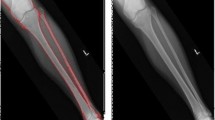Abstract
For the segmentation of X-ray angiograms (XRA), the essential feature and the prior knowledge of angiographic image were analyzed, and a multi-feature based fuzzy recognition (MFFR) algorithm was proposed to infer the local vessel structure in this paper. Guided by the prior knowledge of artery vessel, a probability tracking operator (PTO) can rapidly track along the artery tree, and walk across the weak region or gaps because of disturbance or preprocessing to angiographic image. Another, the accurate measurement of the vascular axis-lines and diameters can be synchronously implemented in the tracking process. To correctly evaluate the proposed method, a simulated image of CAT and some clinical XRA images were used in the experimentations. The algorithms performed better than the conventional one: given one start-point, on average 92.7% of the visible segments or branches was automatically delineated; the correctness ratio of vessel structure inference reached to 90.0% on the average.
Similar content being viewed by others
References
Kirbas C, Quek K H F. Vessel extraction techniques and algorithms: A survey. In: Proceedings of the 3rd IEEE Symposium on BioInformatics and BioEngineering (BIBE), 2003. 238–245
Sun Y. Member IEEE. Automated identification of vessel contours in coronary arteriograms by an adaptive tracing algorithm. IEEE Trans Med Imaging, 1989, 8(1): 78–88
Can A, Shen H, Turner N J, et al. Rapid automated tracing and feature extraction from retinal fundus images using direct exploratory algorithms. IEEE T Inf Technol Biomed, 1999, 3(2): 125–138
Lalonde M, Gagnon L, Boucher M C. Non-recursive paired tracing for vessel extraction from retinal images. In: Proceedings of the Conference Vision Interface 2000. Ottawa, 2000. 61–68
Park S, Lee J, Koo J, et al. Adaptive tracing algorithm based on direction field using ML estimation in angiogram. In: IEEE Conference on Speech and Image Technologies for Computing and Telecommunications. Brisbane, 1997. 671–675
Aylward S R, Bullit E. Initialization, noise, singularities, and scale in height ridge traversal for tubular object centerline extraction. IEEE Trans Med Imaging, 2002, 21(2): 61–75
Schrijver M, Slump C H. Automatic segmentation of the coronary artery tree in angiographic projections. In: Proceedings of ProRISC 2002. Veldhoven, 2002. 449–464
Chutatape O, Zheng L, Krishnan S M. Retinal blood vessel detection and tracing by matched Gaussian and Kalman Filters. In: Proceedings of the 20th Annual International Conference of the IEEE Engineering in Medicine and Biology Society. Hong Kong, 1998. 3144–3149
Yannis A T, Stavros M P. A fuzzy vessel tracing algorithm for retinal images based on fuzzy clustering. IEEE Trans on Med Imaging, 1998, 17(2): 263–273
Grisan E, Pesce A, Giani A, et al. A new tracing system for the robust extraction of retinal vessel structure. In: Proceedings of the 26th Annual International Conference of the IEEE EMBS. San Francisco, 2004. 1620–1623
Frangi A F, Niessen W J, Vincken K L, et al. Multiscale vessel enhancement filtering. In: Wells W M, Colchester A, Delp SL, eds. Medical Image Computing and Computer-Assisted Intervention. Berlin: Springer Verlag, 1998. 130–137
Sato Y, Nakajimma S, Atsumi H, et al. 3-D Muli-Scale line filter for segmentation and visualization of curvilinear structures in medical images. Med Image Anal, 1998, 2(2): 143–168
Wink O, Wiro J N, Max A V. Multiscale Vessel Tracking. IEEE Trans Med Imaging, 2004, 23(1): 130–133
Wilkinson M H F, Wijbenga T, de Vries G, et al. Blood vessel segmentation using moving-window robust automatic threshold selection. In: Proceedings of 2003 International Conference on Image Processing (ICIP), 2003. 14–17
Moreno P, Bernardino A, Santos-Victor J. Model based selection and classification of local features for recognition using Gabor filters. In: Proceedings of International Conference on Image Analysis and Recognition (ICIAR), 2006. 181–192
Moreno P, Bernardino A, Santos-Victor J. Gabor parameter selection for local feature detection. In: Proceedings of the 2nd Iberian Conference on Pattern Recognition and Image Analysis. Estoril: Springer Verlag, 2005. 7–9
Author information
Authors and Affiliations
Corresponding author
Additional information
Supported by the National Basic Research Program of China (Grant No. 2003CB716101), the National Natural Science Foundation of China (Grant No. 60772120) and the Key National Science Foundation of China (Grant No. 30730026)
Rights and permissions
About this article
Cite this article
Zhou, S., Yang, J., Chen, W. et al. New approach to the automatic segmentation of coronary artery in X-ray angiograms. Sci. China Ser. F-Inf. Sci. 51, 25–39 (2008). https://doi.org/10.1007/s11432-008-0005-5
Received:
Accepted:
Issue Date:
DOI: https://doi.org/10.1007/s11432-008-0005-5




